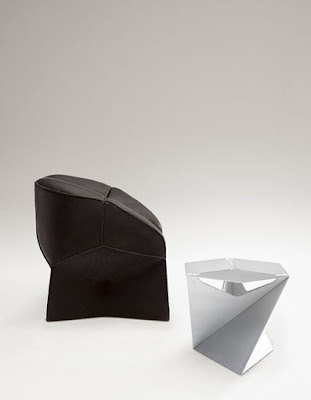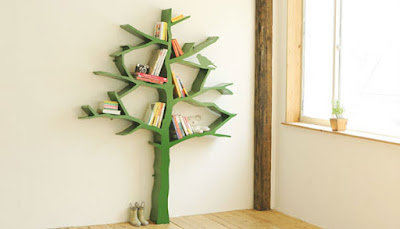Museum residencies allow emerging designers to develop - artistically and commercially - in a sympathetic environment. Laura Snoad reports
As the rest of the country grudgingly ventures back to work after a season of excess, the second set of the Design Museum’s Designers in Residence are busily putting the finishing touches to their installations, ready for the launch on 27 January.
Asif Khan, Bethan Laura Wood and the Farm collective (Giles Miller, Alexena Cayless, Sebastian Hejna and Guy Brown) were commissioned in August 2009 to develop site-specific work for the museum.
Before that, assistant curator Margaret Cubbage, who organises the residency scheme, rigorously scouted nationwide graduate shows across the UK and contacted educational establishments for top talent. She then invited a select few to submit proposals.
‘The scheme is about opening a dialogue between the museum and designers,’ Cubbage says. ‘We’re a client, in a way, but a big client that gives them a platform to present their work to the public.’
The residency also helps bridge the gap between educational and commercial practice. The museum organises intellectual property seminars for its residents, and invites lawyers to discuss the logistics of contracts, partnerships and collaborations.
Funded by the Esmée Fairbairn Foundation for the past three years, a Design Museum residency provides a sound financial footing for developing in-depth research without the immediate pressure of creating and selling a finished product.
Wood took the opportunity to develop themes from her MA in design products at the Royal College of Art by delving into the Design Museum’s architectural history. She crafted laminate patchwork from packing crates (a nod to the museum’s former incarnation as a banana warehouse), old KFC tabletops and offcuts donated by Italian manufacturer Abet Laminati. The laminate will form furniture for the museum’s café. ‘I’ve tried to use tactile finishes,’ she says. ‘I want the work to be covered in sticky fingerprints at the end of the day.’
Fellow resident Khan foraged for local flora before making a set of furniture using their freeze-dried remains. Although appreciative of the opportunity to experiment, he needed advice to edit the vast body of work produced during his residency.
Khan says, ‘Curators have a better instinct of how to communicate ideas to the public, especially to those with no previous design knowledge or those who only have 30 seconds to see the installation.’
London’s Victoria & Albert Museum, which offers six-month residencies, pushes interaction with the public a step further. The museum focuses heavily on creating workshops for visitors and aims to furnish its residents with teaching skills that they can use to support themselves later in life.
Karen Rubins, who recently completed a stretch as the V&A’s cartoonist-in-residence, organised comic workshops for adult refugees from across the globe. Alongside learning how to educate and curate an exhibition of comic art, Rubins found that having studio space within the museum transformed her working practice.
‘Before, I was very insular, not showing anyone my work until I presented the finished product,’ she says. ‘[The residency] helped me get over that barrier and think about why I make certain decisions.’
Unlike the Design Museum method, the commissioning process at the V&A is discipline-specific. External partners often suggest a certain project and then an open call is launched to find suitable candidates.
Ruth Lloyd, the V&A’s residency and displays co-ordinator, says residencies are important for keeping cultural institutions relevant. ‘It’s vital the public is able to see our collections reinterpreted through contemporary art and design,’ she says.
Working with large cultural organisations also provides networking opportunities and is a strong accolade. Miller, from the Farm collective, says, ‘It’s a sign that you’re doing something right when you’re approached by someone like the Design Museum. It is the be-all-and-end-all of British design culture.’
Educational establishments have long realised the importance of giving new designers space to develop professionally. Bronwen Deane, a jewellery designer who participated in Northumbria University’s residency scheme 11 years ago, says, ‘Having access to the facilities and staff is so valuable. Residencies are stepping-stones to the real world.’
Jethro Macey, a Design Museum resident in 2008 who is currently creating a range of bathroom furniture for Italian company Ex-t, agrees. ‘It gives you time to work out who you are as a designer, acquire more skills and discover what works and what doesn’t,’ he says.
After the Design Museum’s residencies end, much of the work is absorbed into the museum’s collection. Cubbage stresses the importance of investing in young talent. ‘As part of the residencies, the museum can showcase more experimental work, and support a new generation of designers,’ she says. ‘Together, we are shaping the future of design.’
Residency Schemes
Designers in Residence is a consultancy that places established designers in schools to run design-oriented workshops
The University of Salford, Manchester Metropolitan University, Northumbria University and Glasgow School of Art offer their facilities and knowledge through residency schemes
Museum-based residencies include London Printworks, the Arc arts centre in Stockton and MoDA, the Museum of Domestic Design & Architecture at Middlesex University
More
contemporary furniture and design at
http://www.kevinhallsworth.co.uk/ the website of Kevin Hallsworth designer and maker of
contemporary bespoke furniture and creator of the
Industryindesign collection.




















































